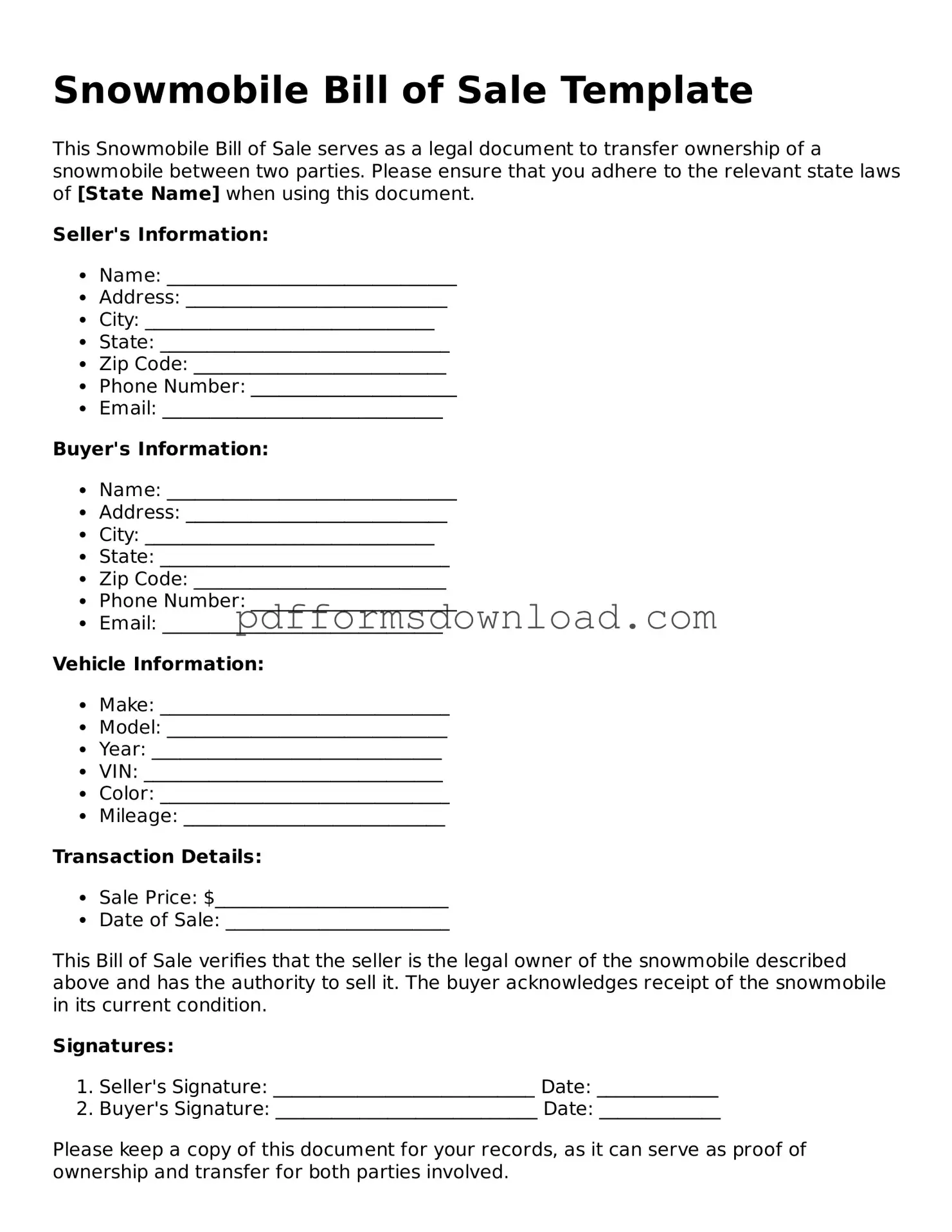What is a Snowmobile Bill of Sale?
A Snowmobile Bill of Sale is a legal document that records the sale of a snowmobile from one party to another. It serves as proof of the transaction and includes important details about the snowmobile, the buyer, and the seller. This document can be essential for registration and ownership transfer purposes.
Why do I need a Snowmobile Bill of Sale?
This document is important for several reasons. First, it provides evidence of the sale, which can protect both the buyer and seller in case of disputes. Second, it helps in transferring the title and registering the snowmobile with the state. Lastly, it may be required by insurance companies to verify ownership.
What information should be included in the Snowmobile Bill of Sale?
The Snowmobile Bill of Sale should include the following details: the names and addresses of both the buyer and seller, the date of the sale, a description of the snowmobile (including make, model, year, and Vehicle Identification Number), the sale price, and any warranties or conditions of the sale. Both parties should sign the document to make it valid.
Do I need to have the Bill of Sale notarized?
Notarization is not always required, but it can add an extra layer of security to the transaction. Some states may require notarization for the Bill of Sale to be considered valid for registration purposes. It is advisable to check local regulations to determine if notarization is necessary.
Can I use a generic Bill of Sale template for my snowmobile?
Yes, you can use a generic Bill of Sale template, but it is important to ensure that it includes all necessary information specific to the snowmobile transaction. Customizing the template to reflect the details of the sale will help avoid any potential issues down the line.
What if the snowmobile has a lien on it?
If there is a lien on the snowmobile, it is crucial to address it before completing the sale. The seller should pay off the lien and obtain a lien release from the lender. This document should be included with the Bill of Sale to ensure that the buyer receives clear ownership of the snowmobile.
Where can I obtain a Snowmobile Bill of Sale form?
You can find a Snowmobile Bill of Sale form online through various legal document websites, or you may be able to obtain one from your local Department of Motor Vehicles (DMV). Additionally, many office supply stores offer templates that can be filled out for your specific needs.
